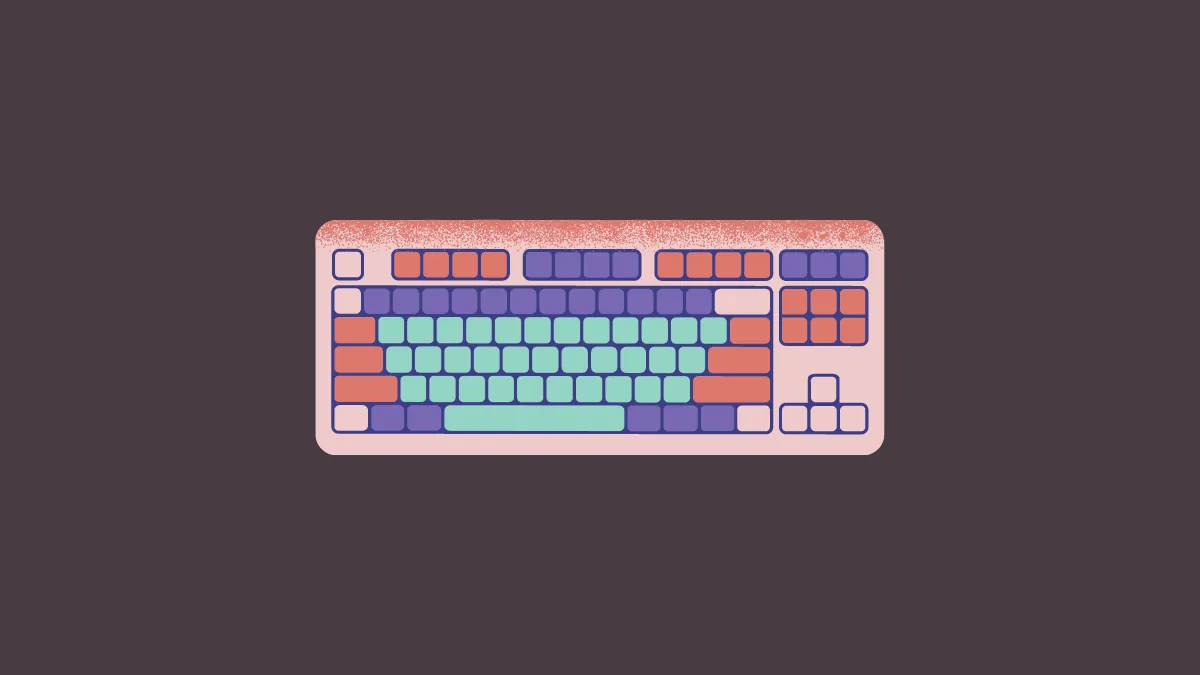Experiencing your Spacebar or Enter key not working on Windows 11 can be highly frustrating. Fortunately, if the issue is software-related, there are several methods you can try to restore your keyboard's functionality. This guide provides detailed steps to help you resolve the problem.
Turn off Sticky and Filter Keys on your computer
Sticky Keys and Filter Keys are accessibility features that can sometimes interfere with normal keyboard operation. Disabling these settings may resolve the issue with your Spacebar or Enter key.
Step 1: Open the Settings app by clicking on the Start button and selecting the gear icon, or by searching for Settings in the Start Menu.

Step 2: In the Settings window, select the Accessibility option from the left sidebar.

Step 3: Scroll down to the Interaction section on the right and click on Keyboard.
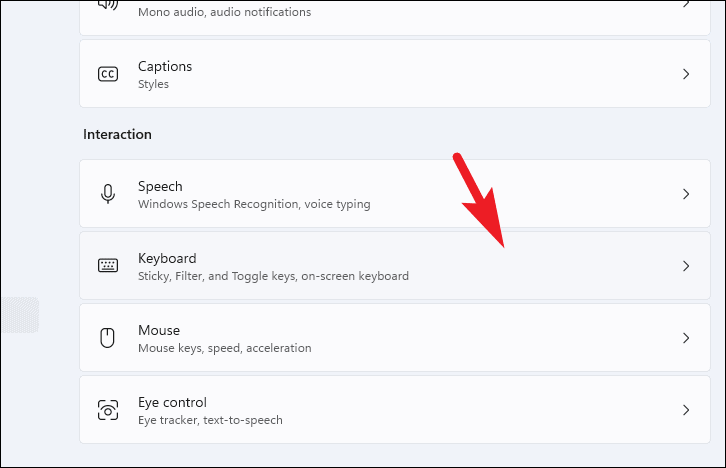
Step 4: Under the Sticky, Filter, and Toggle keys section, find the Sticky Keys option and toggle it to Off.

Step 5: Locate the Filter Keys option and toggle it to Off as well.
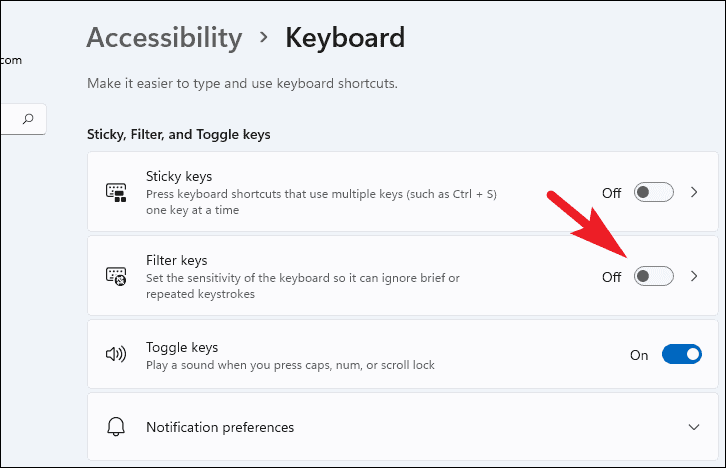
Now, test your keyboard to see if the Spacebar and Enter keys are functioning properly.
Update your keyboard driver
An outdated or corrupted keyboard driver can cause keys to stop working. Updating the driver might fix the problem.
Step 1: Open the Start Menu, type Device Manager, and select the Device Manager app from the search results.
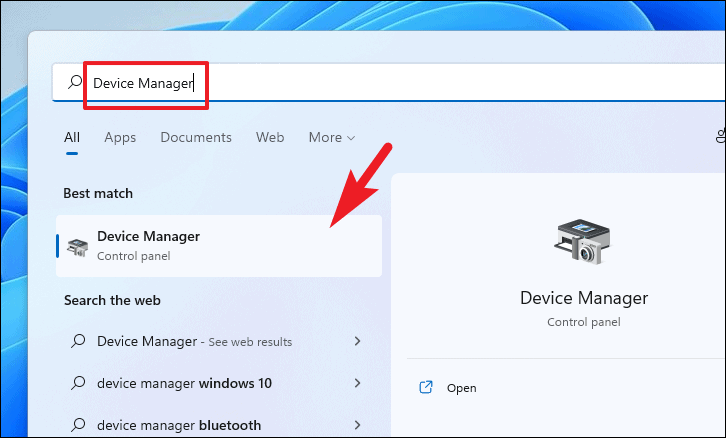
Step 2: In the Device Manager window, click the arrow next to Keyboards to expand the list.

Step 3: Right-click on your keyboard device (e.g., HID Keyboard Device or Standard PS/2 Keyboard) and select Update driver from the context menu.

Step 4: In the Update Drivers window, choose Search automatically for drivers to allow Windows to find and install the latest driver. If you have a driver downloaded, select Browse my computer for drivers and locate it manually.
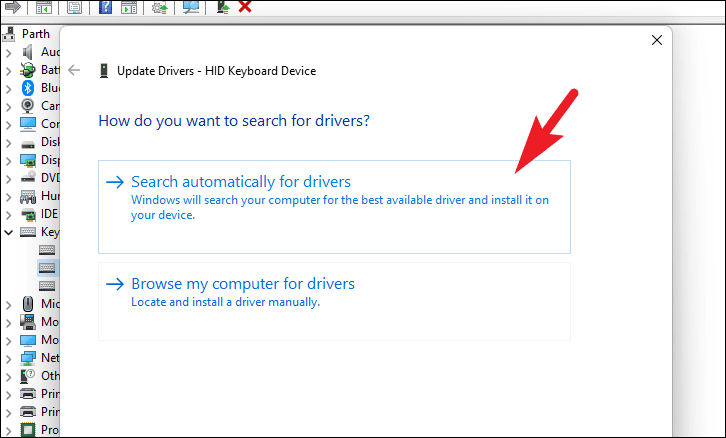
After updating, check if your keyboard's Spacebar and Enter keys are working.
Run the keyboard troubleshooter
Windows 11 includes a built-in troubleshooter that can detect and fix keyboard problems automatically.
Step 1: Open the Settings app by pressing Windows+I on your keyboard or by searching for Settings in the Start Menu.
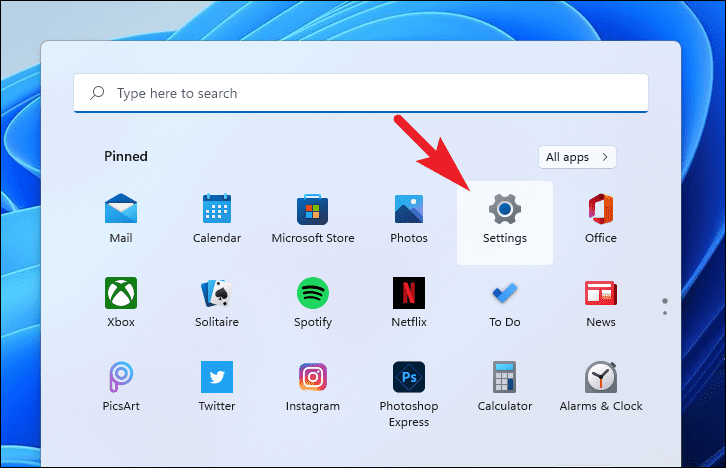
Step 2: Ensure the System tab is selected on the left sidebar.
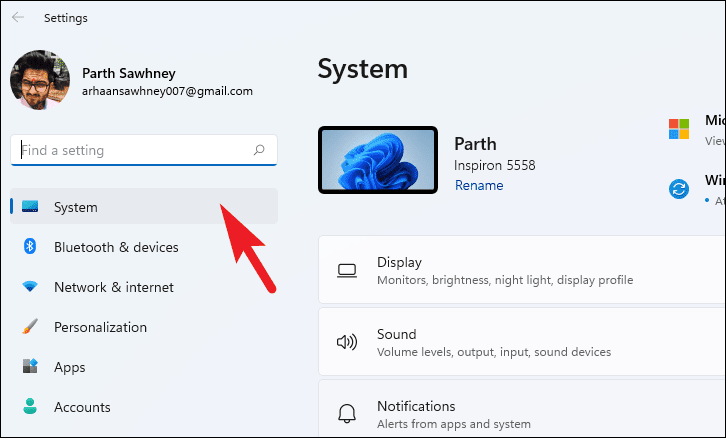
Step 3: On the right side, click on Troubleshoot.

Step 4: Click on Other troubleshooters.
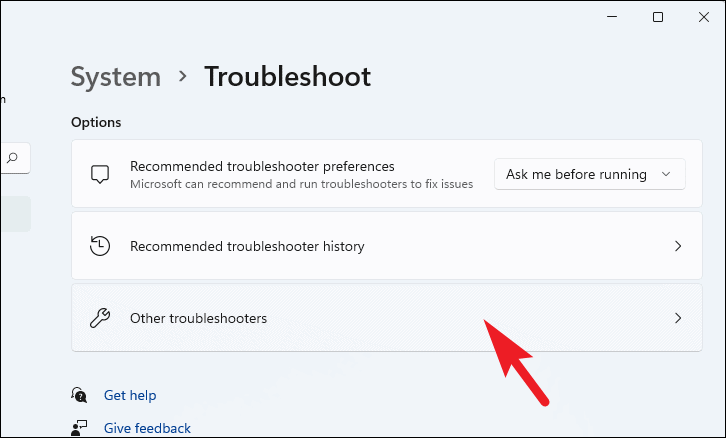
Step 5: Scroll down to the Other section and click the Run button next to Keyboard to start the troubleshooter.
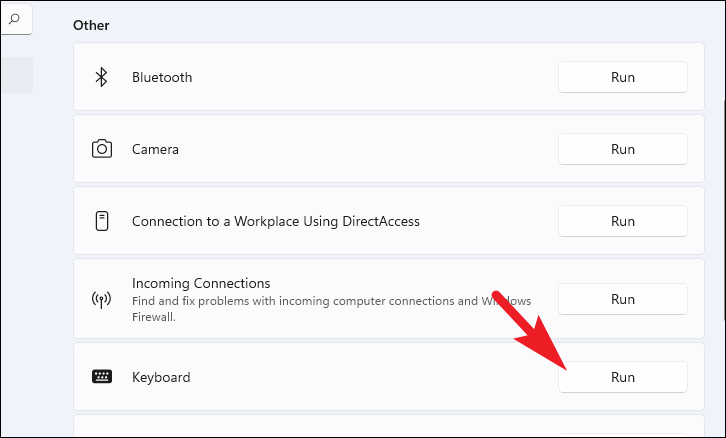
Windows will search for any keyboard-related issues and attempt to fix them automatically.
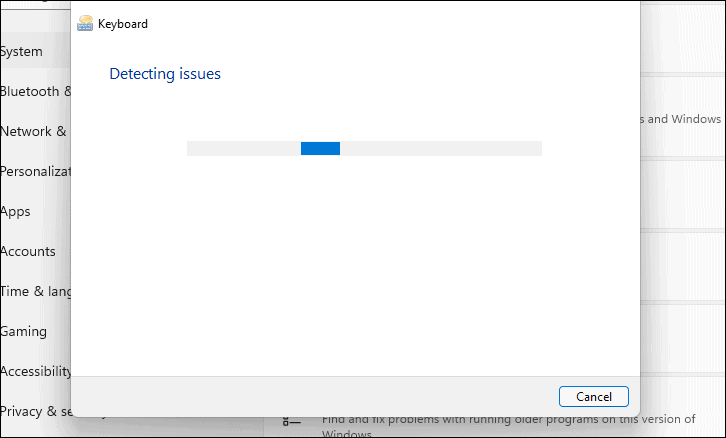
Reinstall your keyboard driver
If updating the driver didn't help, reinstalling it may resolve any corruption or issues with the driver files.
Step 1: Open Device Manager by typing Device Manager into the Start Menu and selecting the app.
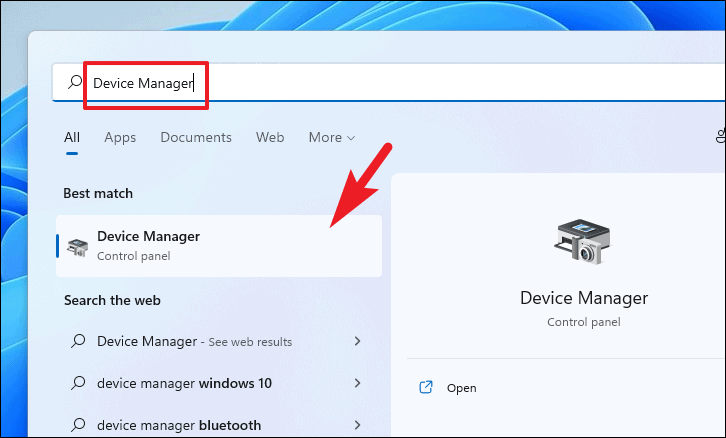
Step 2: Expand the Keyboards section by clicking the arrow next to it.

Step 3: Right-click on your keyboard device and select Uninstall device.
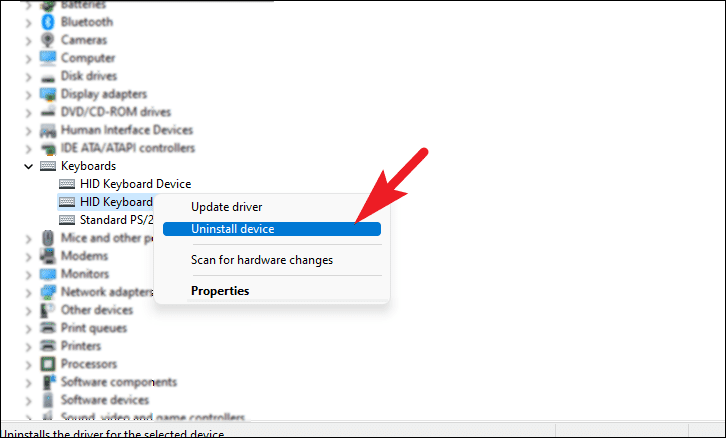
Step 4: Confirm any prompts to uninstall the driver.
Step 5: Restart your computer. Windows will automatically reinstall the keyboard driver upon reboot.
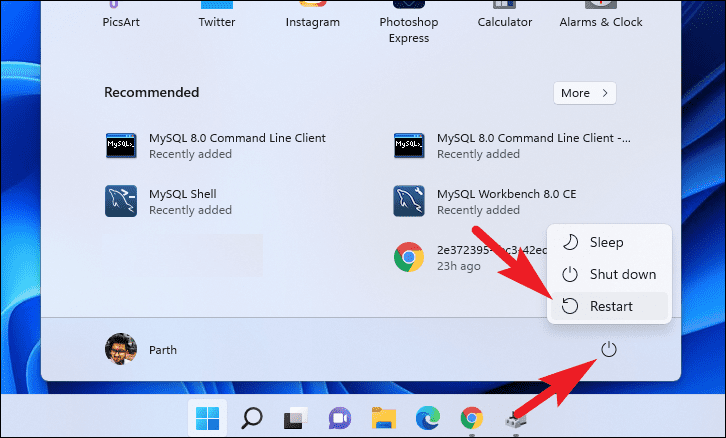
After restarting, check if the keyboard keys are now functioning.
Reset your Windows 11 PC
If none of the previous methods worked, resetting your PC may resolve the issue by reinstalling Windows while keeping your personal files intact.
Step 1: Open the Settings app by pressing Windows+I or by searching for Settings in the Start Menu.

Step 2: Ensure you're on the System tab in the Settings window.
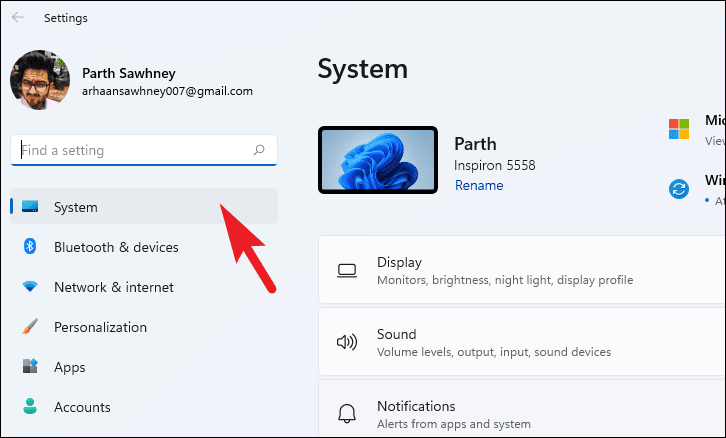
Step 3: Click on Recovery on the right side.
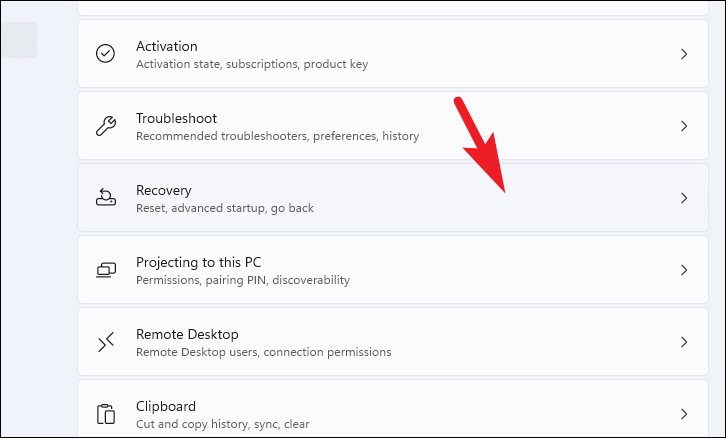
Step 4: Under Recovery options, click the Reset PC button next to Reset this PC.

Step 5: In the Reset this PC window, choose Keep my files to retain your personal data while resetting Windows.
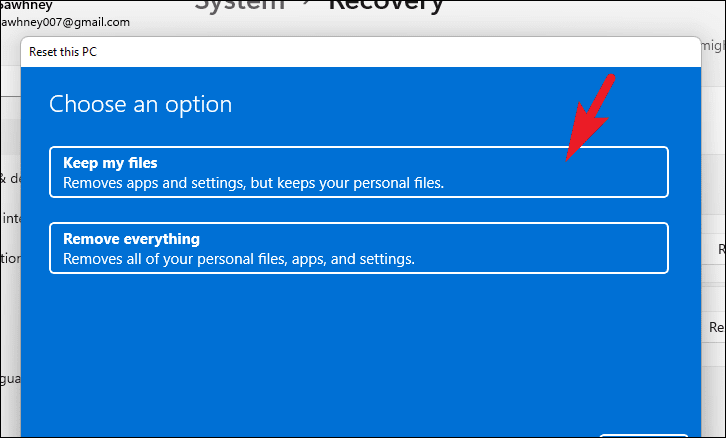
Step 6: Select either Cloud download or Local reinstall. Cloud download will download a fresh copy of Windows from Microsoft, which may be more reliable but requires an internet connection and at least 4 GB of data.
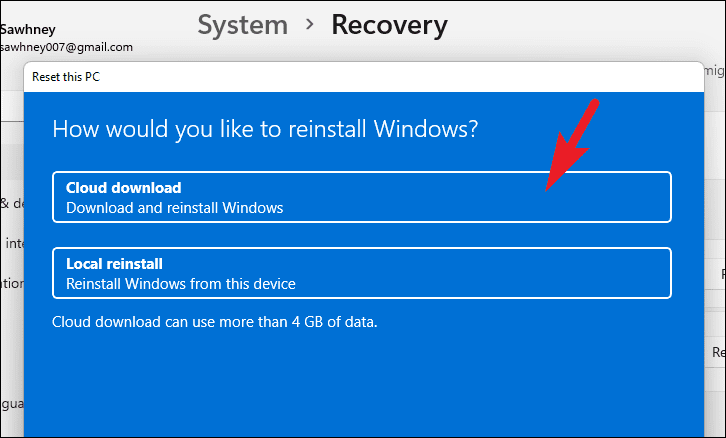
Step 7: Review the reset settings. If you need to change any options, click on Change settings; otherwise, click Next.

Step 8: Read the information on the next screen and click Reset to begin the process.
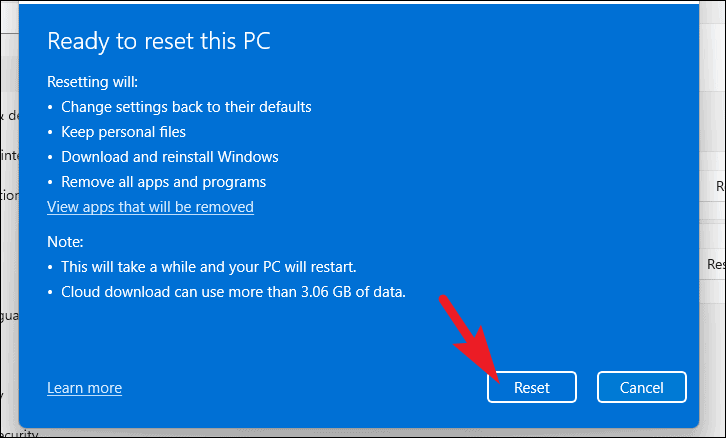
Your computer will restart and begin the reset process. This may take some time and your PC may restart several times. Once completed, check if the Spacebar and Enter keys are working.
If these methods do not resolve the issue, it's possible that the problem is hardware-related. In that case, consider consulting a professional technician or replacing the keyboard.

